36. Attempt to Escape
(Final Episodes)
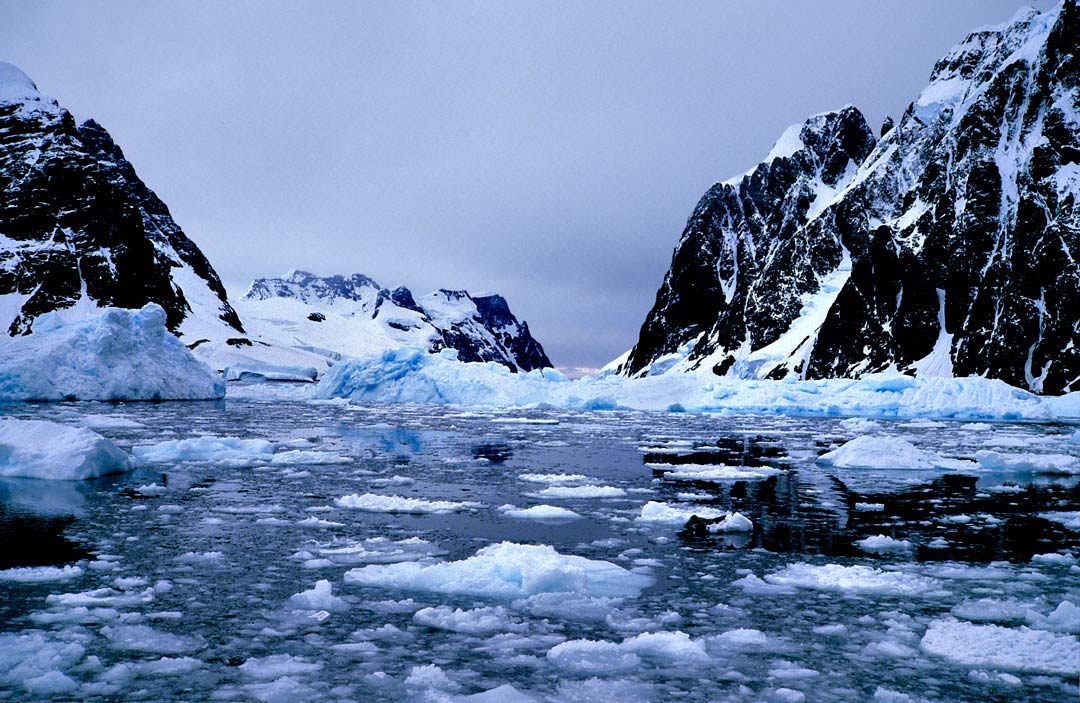
1. Ice Field: Hopeless
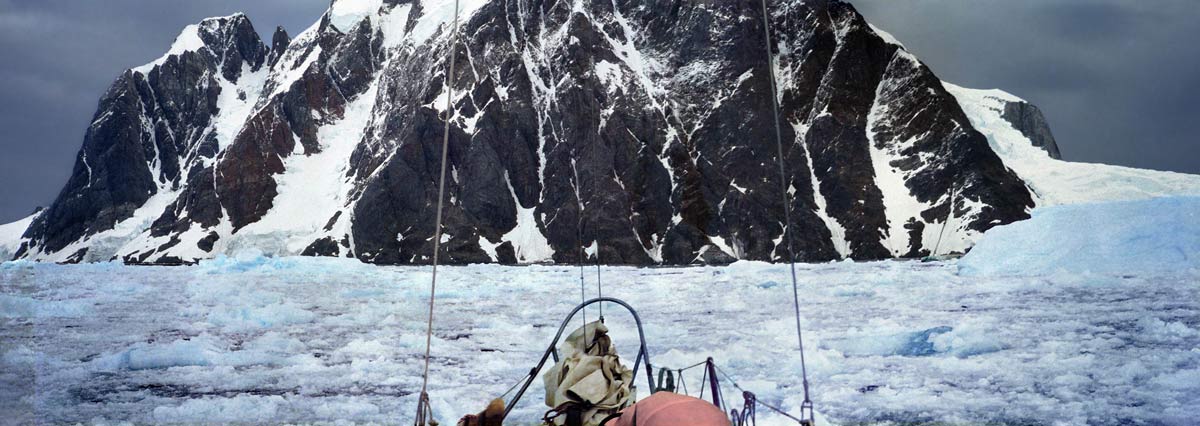
The second escape attempt takes place on April 4, five days after my return to Galindez Island. This corresponds to October in the Northern Hemisphere, just before winter. Beneath thick clouds, with the snowstorm fortunately over, Aomi heads north, racing across the sea as if fleeing.
As Aomi enters the Lemaire Channel—a passage between steep mountains known for its spectacular views—the channel’s black water is dotted with small white ice chunks, each less than 1 meter long.
Aomi glides smoothly along the valley floor, leaving a long trail as if a broom had swept the marbled black water speckled with white ice.
But the crisp black-and-white surface soon turns into an overwhelming whiteness. Worse, massive chunks of ice clog the valley ahead, piling up like a vast dumping ground.
Ice floes the size of refrigerators or cars, and icebergs as large as trains or buildings stretch across the water. A wilderness, a chaotic white expanse, stretches across the valley, its surface rising and falling. There is no way forward for Aomi.
I refuse to turn back. If I give up now, Aomi will be trapped in the fast-approaching winter, forever lost in the frozen expanse of the Antarctic.
This is not my first time crossing a thick ice field. If I apply everything I’ve learned, I’ll be able to push forward.
I frantically climb the mast, 10 meters above sea level, and scan the ice-choked valley ahead. But icebergs block my view, and I see no sign of an opening in the ice.
I hastily climb down from the mast, alter course 90 degrees, and navigate along the edge of the ice field, searching for a gap. But the north wind and the tide from the south push countless chunks of ice into the channel, packing them tightly as they rise on the water.
My only option is to force my way into the white wilderness. But with just a 3.5‑horsepower engine, I could easily run out of power.
Still, I’ll push forward with everything I have—I refuse to return to Galindez Island.
I make up my mind, find a spot with smaller ice blocks, and push the bow in at the right angle.
Aomi slowly moves through the white field, her hull scraping against the ice with a harsh, grating noise. But the tightly packed ice blocks press against one another, instantly closing the water that opens behind Aomi. Turning back will be even harder once moving forward becomes impossible.
With each advance of Aomi’s bow, I scan the ice-piled, rugged field ahead, steering toward the lowest gap. She weaves between house-sized icebergs, pressing forward as if lost in a frozen maze.
But the farther Aomi advances, the ice grows higher and thicker. Even at full engine power, she barely crawls forward. Midway through the frozen wilderness, Aomi finally comes to a stop.
I shift the engine into reverse, but Aomi’s hull, locked in dense ice, refuses to move even 5 centimeters. Helpless, she will be crushed by ice floes driven by the wind and waves when the next storm arrives.
I grip the helm and try to make a U-turn in the ragged white expanse, where ice piles up all around, but to my shock, the rudder will not move: neither pushing nor pulling. Numerous chunks of ice are jammed beneath Aomi, preventing the rudder from moving.
I push the tiller hard, almost slamming it. If I apply too much force and break the rudder, I will be stuck here with no way out.
I push the speed lever forward until black smoke rushes out of the exhaust at the stern. If the piston seizes beyond its rotation limit, Aomi will never sail again.
But even so, even knowing I might fail, I’ve no intention of giving up.
Suddenly, a violent grinding sound echoes from below. I instantly pull back the speed lever. If the propeller blades hit the ice and break, the possibility of escaping will be reduced to zero.
I carefully increase the engine speed, my left hand on the tiller, while my right hand alternates between the speed lever and the shift lever, cycling between ahead and astern, almost praying. The grinding of the hull against the ice nearly stops my heart, but I keep trying with all my strength.
Then, fortunately, Aomi begins to advance, her bow cracking through the ice.
Suddenly, Aomi slams to a stop as if striking a wall unseen by human eyes: Her bow collides with a massive, flat ice sheet lurking beneath the broken floes.
Worse still, the impact forces the flat ice sheet downward, but then it suddenly floats up, lifting Aomi’s bow into the air. She tilts sharply to the side, and I nearly fall.
Yet the engine—like a part of my body, infused with my blood and cared for with all my soul—keeps running without fail. The hull, reinforced over months in Buenos Aires, also withstands the intense friction of the ice.
Cautiously, inch by inch, Aomi pushes forward, then, suddenly, the ice field ends, and a vast expanse of black water opens before me.
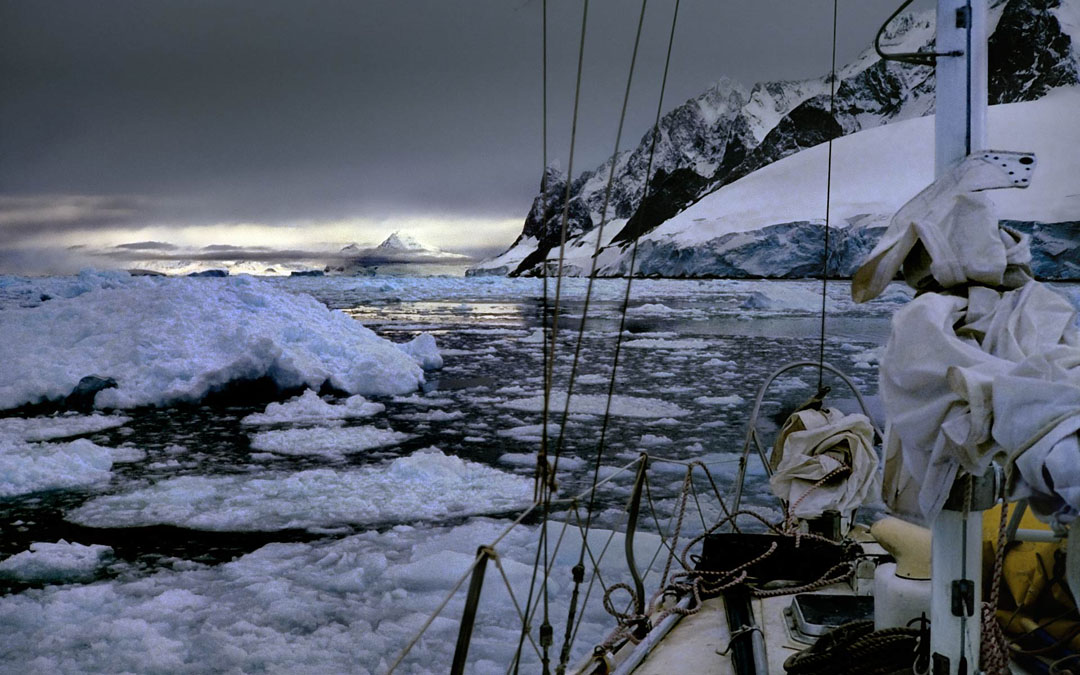
2. Beyond Palmer Station
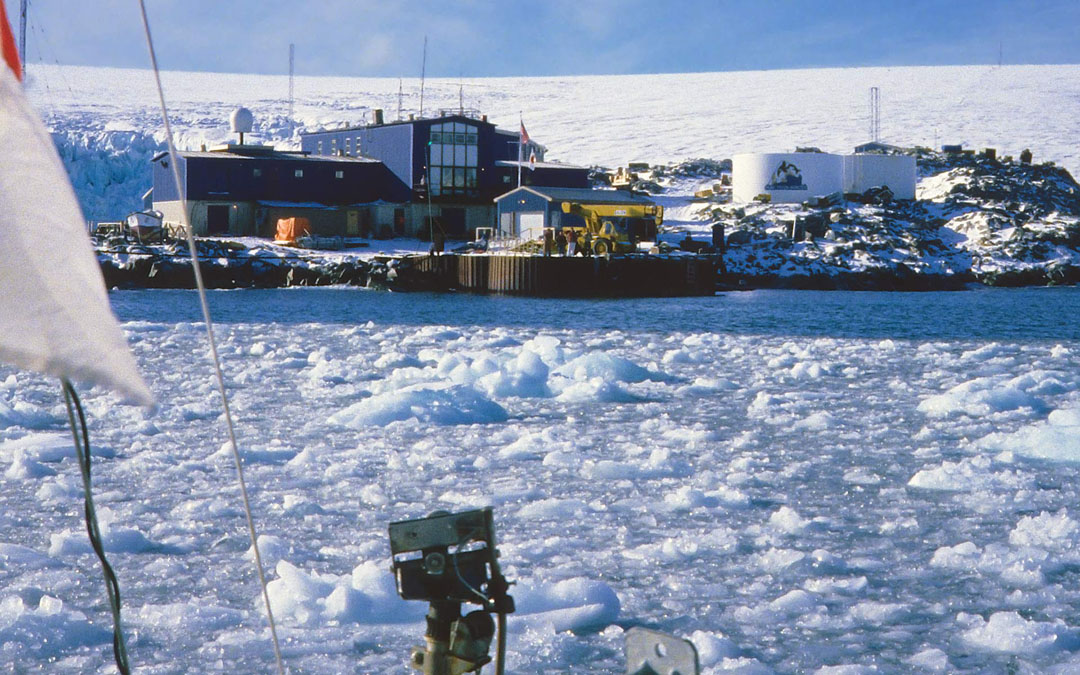
“Welcome to Palmer Station! We received a radio message from Faraday Base and we were all concerned about your late arrival. We’d love to invite you to dinner. Please come visit our base.”
A dozen or so people greet me ashore, smiling as they shake my hand.
I cross the frozen ground and follow them to the dining room on the second floor of the main building, where a blackboard displays my name and a welcome message in large letters.
When the base manager introduces me, nearly fifty crew members clap and cheer. Even here in the Antarctic, some wear short sleeves.
Tonight’s buffet serves freshly grilled steaks and a crisp salad of tomatoes and lettuce, a rare treat in this region.
“Tomorrow morning, we’ll raise the Japanese flag in front of the base. We have flags from all the Antarctic Treaty nations.”
“I’ll also fly the American flag on my boat’s mast. Thank you so much.”
The base feels like another world. Heated to early-summer warmth, it offers abundant food, drinks, and movies in the recreation room; people here live in comfort and safety.
Is this really the Antarctic, or am I in a large house on the U.S. mainland? Where am I? What am I doing? Is this reality or a dream?
I am in a completely different world from the one at sea and the one awaiting me ahead. I find myself forgetting all this as I watch a comedy with them, surrounded by smiling faces offering me drink after drink.
After a few days spent both recovering physically and mentally from navigating the ice field and waiting for good weather, the bright red supply ship Polar Duke emerges where the gray sky and sea meet and then docks in front of the base.
I dash up the long steel staircase and head to the wheelhouse on the top deck to get the latest weather report. The base manager accompanying me gives a detailed explanation to the ship’s captain.
An elderly Canadian gentleman listens in surprise, then murmurs,
“Brave man.”
He gently squeezes my hand with both hands.
“Winter has already arrived in the Antarctic. Many of the bays were starting to freeze over when we visited. If you don’t leave soon, your sailboat could become trapped within days.”
Holding up a satellite weather map of the Antarctic, he smiles and adds,
“Tomorrow is a chance.”
The next morning, a clear blue sky stretches over Palmer Station, and the murky gray sea from yesterday turns a deep blue. The powdery snow covering Aomi’s deck like a pure white blanket sparkles all at once, as each crystal catches the sunlight.
After clearing the snow from the deck, I row my rubber dinghy to the base to thank everyone and say goodbye.
As soon as I meet Dan, the base manager, he leads me to the food warehouse. He fills two cardboard boxes, one after the other, with American snacks, fresh tomatoes and oranges, canned goods, and even Japanese sesame oil. They offer me lunch, but there is no time. I must reach the open sea before nightfall.
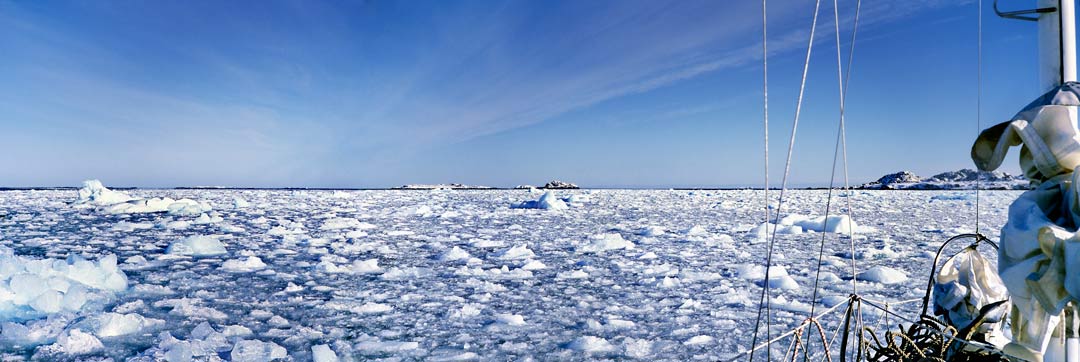
After retrieving the mooring ropes and anchor, I set Aomi’s course for the open sea, gliding over the ice-covered water. I look back and wave my hand again and again. Each time I wave, Aomi's bow rides up onto the ice, tilting dramatically. But by now, I am already used to navigating in ice.
Bathed in golden sunlight, the silver-white ice mountains, the glacier cliffs that look as though blue ink had been poured over them, the floating ice chunks glistening on the sea, and the vivid memories of my forty days in the Antarctic all fade behind me.
By the time the sun sinks toward the horizon, Aomi safely navigates between Antarctic islands and enters the Drake Passage in its early-winter state.
In the darkness, I set Aomi's bow toward Cape Horn, South America's southern tip, 1,000 kilometers to the north.
Tomorrow, a violent storm might strike, and Aomi could be swallowed by towering waves or collide with an unseen iceberg in the dark. I have neither the wisdom nor the power to foresee the future. Yet…
If the weather and luck are on my side, I will likely return to South America. No—even if luck abandons me, I will find a way back to land.
But no matter what happens on the way back, no matter the outcome, my mind is clear: free of hesitation, fear, or regret. I am completely satisfied with my journey.
Is returning alive a success, and losing my life a failure? Is success always good, and failure always bad?
If my survival had been guaranteed, I probably would never have set sail.
The vast ocean swell rocks me for the first time in a while, wrapping around me, and a strange comfort washes over me, as if I have returned to the time before I was born.
As I look back, the ice-covered mountains stand under the night sky, appearing to radiate with their own faint light, as if in another world or a dream.
The End
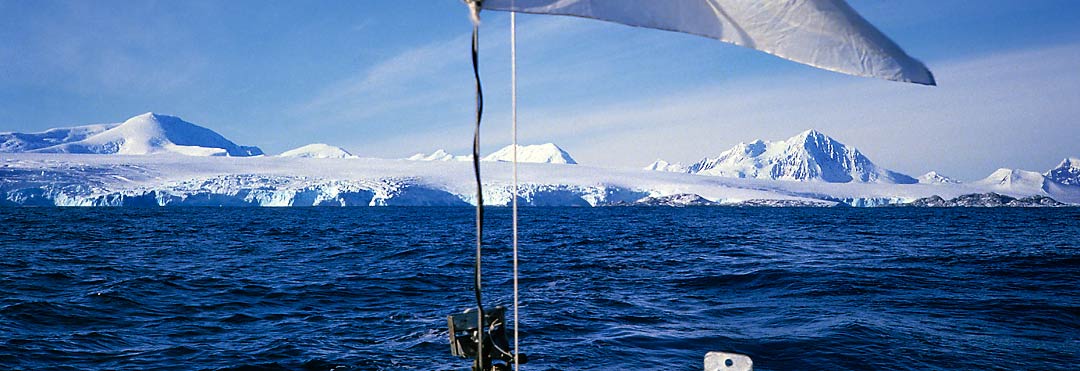 The Last Sight of the Antarctic (from the open sea)
The Last Sight of the Antarctic (from the open sea)
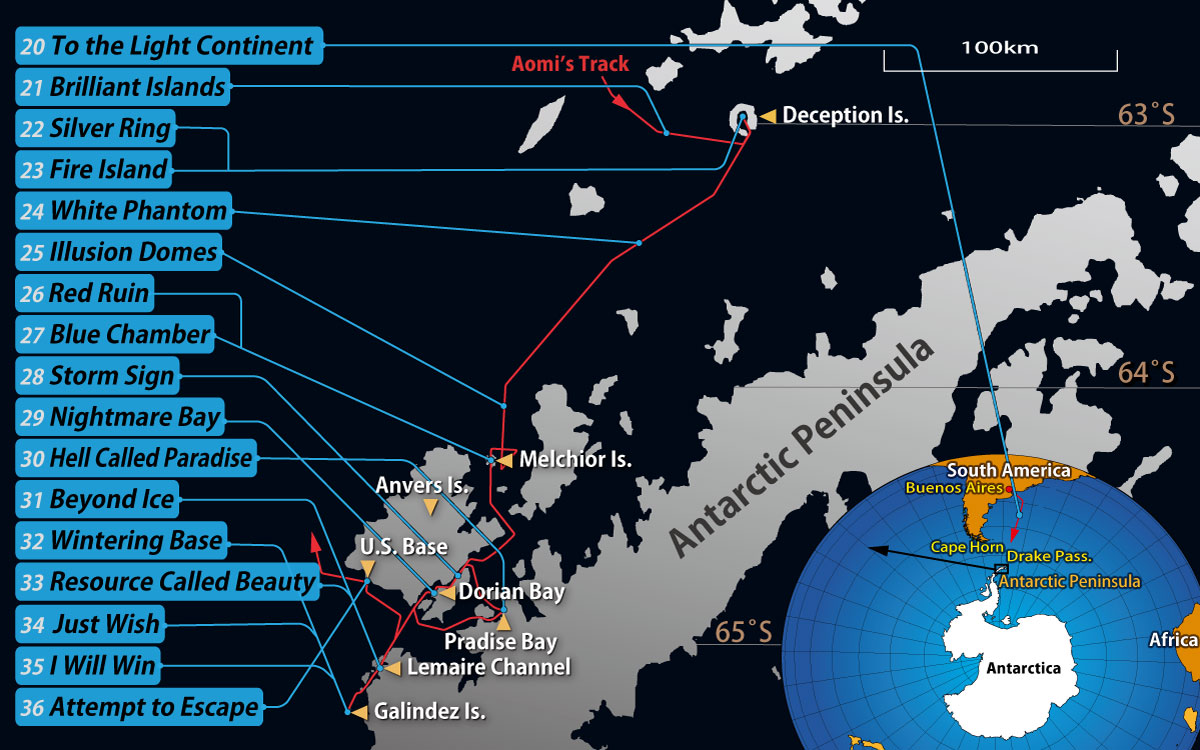
Hi! Any questions or suggestions about the content are greatly appreciated.
I’d also love writing tips from native English speakers. Since English isn’t my first language, if you notice any awkward phrases or anything that seems off, please let me know.
Thank you!
E-mail